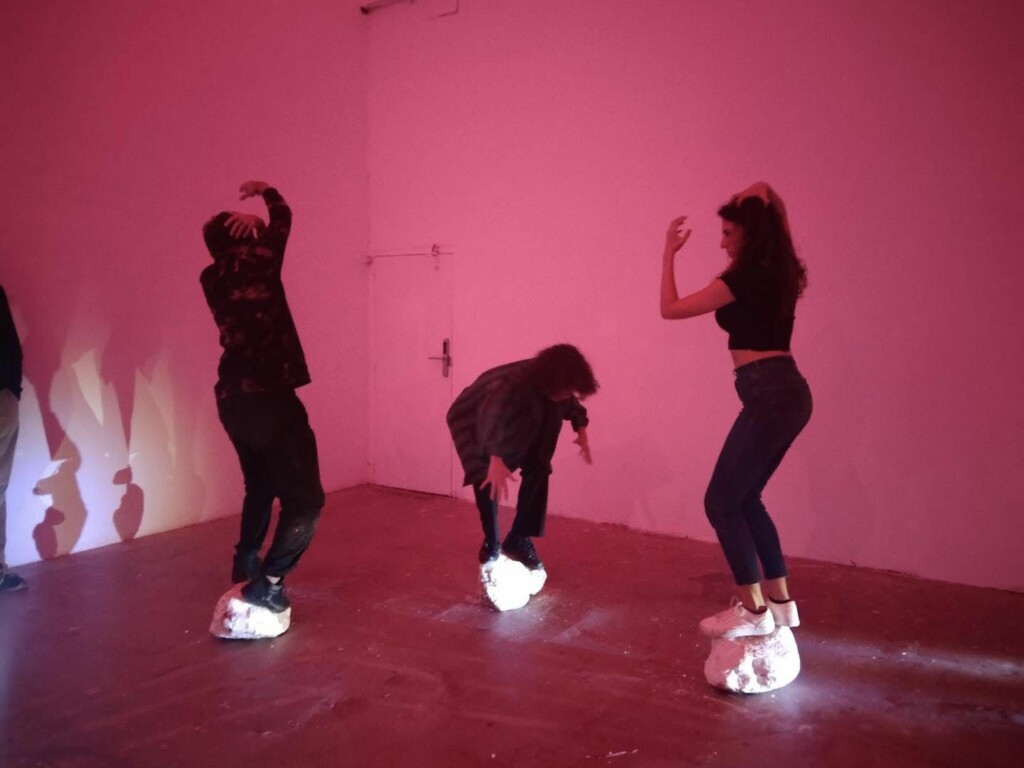Fostering Hybrid Artistic Collaboration: Theatre in Palm Residency at Espronceda

Reimagining Artistic Collaboration: Insights from Theatre in Palm’s Residency at ESPRONCEDA Institute of Art & Culture
The Theatre in Palm hybrid residency, hosted at ESPRONCEDA Institute of Art & Culture in Barcelona, offered a dynamic platform for artistic exploration over two weeks, bringing together creators from partner organizations across Europe. ESPRONCEDA, in collaboration with ZID Theatre (Amsterdam) and JÁ Theatre (Lisbon), played a central role in fostering this initiative.
During the first week, ESPRONCEDA hosted ten Spanish artists in residence, who engaged in an enriching online collaboration with mentors from ZID and JÁ Theatre. This period focused on establishing connections and exchanging perspectives, setting the stage for more profound interactions. The Spanish artists were then divided into two groups, with five traveling to Amsterdam and the other five to Lisbon for the second week, where they continued their work in a physical residency format.



Simultaneously, Espronceda, alongside the NyamNyam collective, mentored artists from Amsterdam and Lisbon. During the first week, the mentoring was conducted online, transitioning to in-person sessions during the second week.
Building Connections and Conceptual Frameworks
The first week revolved around two main objectives: fostering a collaborative environment and delving into theoretical concepts. Artists presented their work, interests, and research to establish connections and build a shared understanding. This exchange laid a foundation for collective creativity and interdisciplinary dialogue.
At the heart of the residency’s conceptual framework was philosopher Stacy Alaimo’s notion of transcorporeality, which examines the interconnectedness of bodies and environments. Through reading sessions and discussions, participants reflected on how this idea resonated with their artistic practices. A collaborative online mind map captured these reflections, visually representing the group’s interpretations. This mind map was later printed and prominently displayed during the public opening of the residency.
Transcorporeality, as explored in the residency, rejects the notion of humans as separate from their surroundings. Instead, it emphasizes our enmeshment within multi-species agencies, technologies, and interactions, challenging static representations of the Anthropocene. Participants investigated how the concept repositions environmentalism as an intrinsic and ever-present force, blurring the boundaries between human agency and the physical world.
From Concepts to Performative Creations

The second week marked the transition from theory to practice. Artists engaged in daily check-ins and check-outs to align and create a comfortable working atmosphere, acknowledging the diversity of profiles and backgrounds within the group. Performative practices were introduced, drawing upon the materials—objects, texts, sounds, and movements—developed during the first week.
These exercises encouraged sharing and listening, transforming individual ideas into collective creations. The results culminated in a performative installation that combined theater, movement, video, objects, and text. The residency’s experimental approach was further emphasized by a sequence-shot online presentation, offering a cohesive view of the collaborative efforts.

Through the lens of transcorporeality, the final performance invited audiences to reconsider the Anthropocene not as a distant, abstract concept but as a lived reality enmeshed with human and non-human agencies.
Exploring Transcorporeality Through Performance
The research topic around which the performance was developed was transcorporeality. Artists in residence investigated the Anthropocene not as a comforting or stabilizing notion, but as one deeply entangled with human actions and interactions.
Transcorporeality does the opposite of distancing or dividing the human from external nature. It implies that we’re literally enmeshed in the physical material world, so environmentalism cannot be an externalized and optional kind of pursuit, but is always present, always at hand. It’s not about other places, because everything that we do, within global capitalism, has far-reaching planetary impacts.
It’s important to realize that there’s no nature that we just act upon. Instead, it’s also acting back upon us, as we are always already the very substance and the stuff of the world that we are changing.
Transcorporeality emphasizes that there are a multitude of possibilities for human agency.






